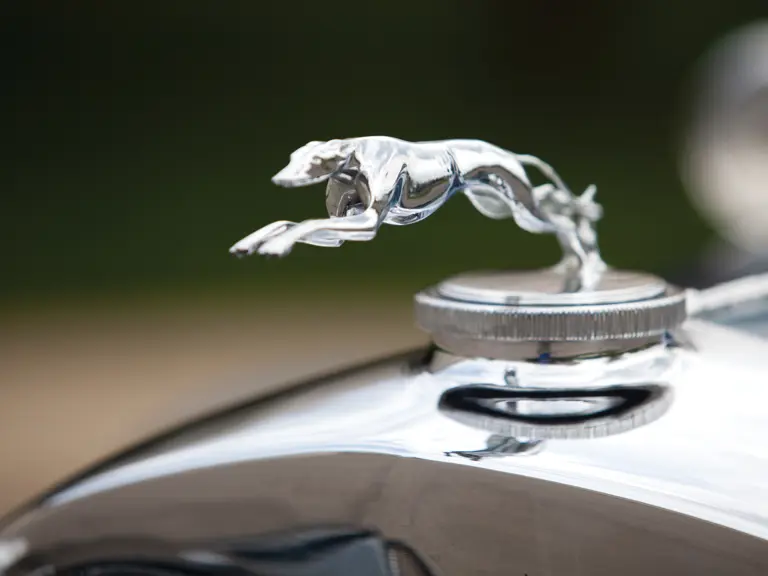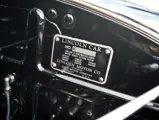
1931 Lincoln Model K Sport Phaeton
{{lr.item.text}}
$165,000 USD | Sold
From the Richard and Linda Kughn Collection
{{bidding.lot.reserveStatusFormatted}}
- From the collection of Richard and Linda Kughn
- The last year of the famous Leland V-8 Lincoln
- Desirable and beautiful body style
- CCCA Senior Award winner
120 bhp, 385 cu. in. side-valve V-8 engine, three-speed manual transmission, solid front axle with leaf spring suspension, torque-tube floating rear axle with leaf spring suspension, and four-wheel Bendix mechanical drum brakes. Wheelbase: 145 in.
For 1931, Lincoln took a major step towards leadership in the fine car segment. A new chassis was introduced, increasing the wheelbase from 136 to 145 inches, in order to allow for both longer hood lines and more space for ever more luxurious coachbuilt bodies. The architecture of the chassis also served to lower the car, and the combination of a stretched hood, low-slung chassis, and lengthened wheelbase transformed the new Lincolns.
Equally important were the changes made under the hood, where an array of engineering updates dramatically improved the performance of the fork-and-blade V-8. While the basic architecture of Henry Leland’s beautifully engineered mill remained unchanged, it now produced a whopping 33 percent more horsepower, for a final rating of 120 brake horsepower. It would be the final year of the Leland V-8, but no one could deny that it didn’t put its best face forward while going out.
The Sport Phaeton offered here features styling inspired by contemporary European fashion of the day, but it was built to American proportions. This dual-cowl phaeton is in the style that was favored, in the day, by wealthy aristocrats for their summer estates; it is distinguished by fully articulated fan-shaped windows in the front doors, echoed in the more traditional “wind wings” affixed to the second windshield used by the rear seat passengers. When the front windows are lowered, a long, narrow body-color hinge drops over the opening to seal the inside of the door, creating a true phaeton with graceful elegance and purity of line. This was the first Lincoln phaeton model to feature a fixed front windshield, rather than the folding type used on earlier styles.
This Model K was formerly owned by a noted long-time collector in the American South, who acquired the car in 1973. The restoration was completed in 1975, and the car received its AACA National First Prize that same year. For three decades, the car was properly stored and maintained in its owner’s collection, but the quality of the restoration faded, and a second restoration was undertaken in 2005 to return the car to show-quality standards. Not long after, and before it had been shown, the Lincoln was added to Mr. and Mrs. Kughn’s collection, where it has been carefully maintained by their professional staff.
Recognizing the car’s status as a “high-point” restoration, Mr. and Mrs. Kughn wasted no time in reintroducing it to the show circuit; this time in the events of the Classic Car Club of America, of which they are proud, long-time members. It was shown at the Lincoln & Continental Owners Club meet at Hickory Corners in 2005, and it was also at the CCCA Grand Classic and CCCA Museum Grand Experience the same year. At the 2006 Michigan Region Grand Classic, the car was judged at 98 points and received its Primary Senior First honors; it returned to the event in 2007 and was judged Senior Second with 96.5 points. The Lincoln also made a well-received appearance at the Meadow Brook Concours d’Elegance in 2006, an event in which Mr. and Mrs. Kughn have long participated.
Having been a show car and covered only 23 miles since its most recent restoration, the Lincoln continues to present beautifully in its handsome color combination of two-tone blue with a brown interior, tan top, and blue wire wheels shod in whitewall tires; all components are in very good cosmetic condition, with only minor signs of age. A litany of accessories includes a single Pilot-Ray driving light, dual horns, the famous Lincoln greyhound mascot, and a trunk rack.
This Lincoln would require only minor freshening to return it to the show field, where it would undoubtedly bring as much pride to the new owner as it has brought to its current caretakers. It would also be ideal to begin using as Henry Leland and Edsel Ford intended: to carry one’s family and friends in undeniably high style, soothed by unparalleled comfort, and propelled by the last iteration of one of the finest engines America had to offer during the Classic Era.



















 | Plymouth, Michigan
| Plymouth, Michigan
















